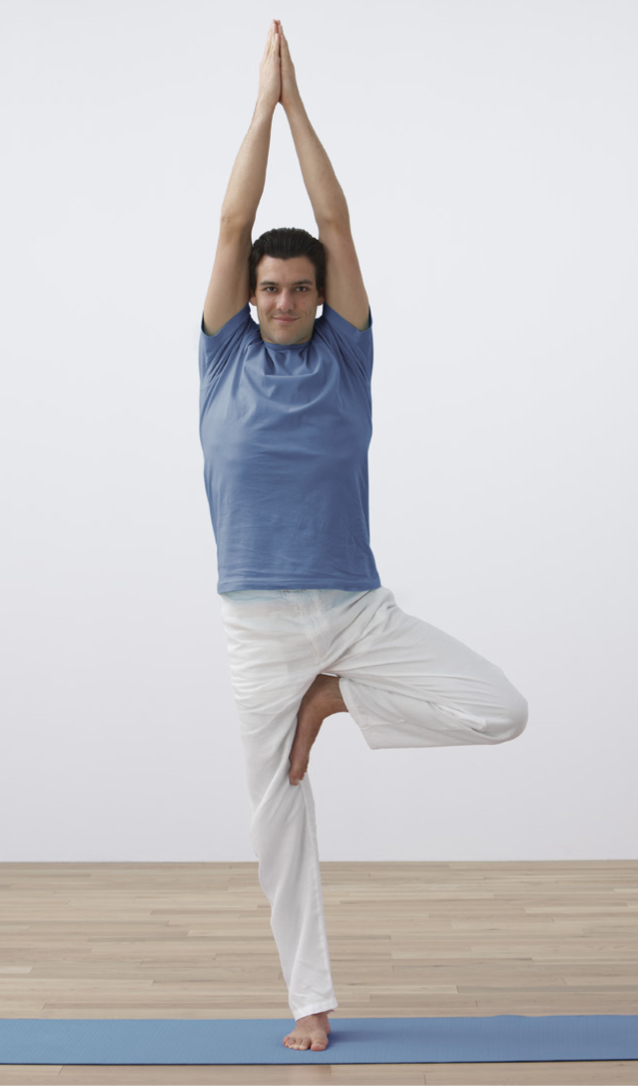What is yoga?
Traditionally, there are four paths of yoga. Although each of them is a complete discipline in itself, it is best not to follow one path only. Combining the four practices helps the emotional, intellectual, and physical aspects of your life to develop in harmony.
The four paths of yoga
Of the four yogic paths, in the West only one is generally well-known and widely practised – the physical and mind-focusing path of Hatha and Raja Yoga, which includes postures and breathing exercises.

HATHA AND RAJA YOGA This is the yogic path of body and mind control. It is best known for its practical aspects, particularly its asanas (postures) and pranayama (breathing exercises). This path teaches ways of controlling the body and mind, including silent meditation, and its practices gradually transform the energy of the body and mind into spiritual energy. This path suits people who are looking for inner and outer transformation.
KARMA YOGA This is the yogic path of action and you practise it when you act selflessly, without thinking about success or reward. This path is valued for purifying the heart and reducing the influence of the ego on your words, actions, and interaction with others. Practising Karma Yoga is the best way to prepare yourself for silent meditation. It suits people with an active, outgoing temperament.
BHAKTI YOGA This is the yogic path of devotion. It involves prayer, worship, and ritual, including chanting and singing devotional songs, and those who practise it eventually come to experience God as the embodiment of love. This yogic path has great appeal for people who are emotional by nature.
JNANA YOGA This is the yogic path of wisdom or knowledge, and it involves studying the philosophy of Vedanta – one of the six classical Indian philosophies. It teaches ways to examine the self and analyse human nature. The goal of this form of yoga is to recognize the Supreme Self in yourself and in all beings. This path is best suited to intellectual people, and is considered by many to be the most challenging path.
The eight steps of Hatha and Raja Yoga
This path was codified by the ancient sage Patanjali in his Yoga Sutras as an eight-step training system for body and mind, which he called Ashtanga Yoga (in Sanskrit, ashta is “eight” and anga “division” or “limb”). The steps purify body and mind until enlightenment occurs.
1 YAMA Sets out the actions from which yogis should restrain. It advocates living a life of non-violence and truthfulness, sublimating sexual energy, not stealing, and not accepting gifts or bribes.
2 NIYAMA Details the actions a yogi should do. It advocates external and internal cleanliness, contentment, self-discipline, study of spiritual literature, and devotion to God. Together, the yamas and niyamas form a highly moral code of ethical conduct. Following them makes the mind more positive and purifies it, ready for deep meditation.
3 ASANA The third step relates to posture. The 12 basic asanas and their variations prepare the body for the meditative poses that are used in steps 6, 7, and 8 (see below).
4 PRANAYAMA The fourth step concerns control of prana or life energy. This is achieved by doing deep-breathing exercises, which include practising breath retention.
5 PRATYAHARA Steps 3 and 4 project the practitioner into a world of intense inner perception. Step 5 teaches how to stabilize this withdrawal of the senses as a preparation to concentration.
6 DHARANA In this step, concentration, the mind is fixed on an imaginary or real object to the exclusion of other thoughts. This is the key practice in all yoga meditation techniques.
7 DHYANA Step 6 leads to step 7, meditation. This uninterrupted flow of thought waves has been compared to oil flowing in an unbroken, stream from one container to another.
8 SAMADHI The final step happens effortlessly as, during meditation, the mind is absorbed into Absolute Consciousness, beyond all the usual states of waking, dreaming, and deep sleep.
“You can have calmness of mind at all times by the practice of yoga. You can have restful sleep. You can have increased energy, vigour, vitality, longevity, and a high standard of health. You can turn out efficient work within a short space of time. You can have success in every walk of life.”
Swami Sivananda